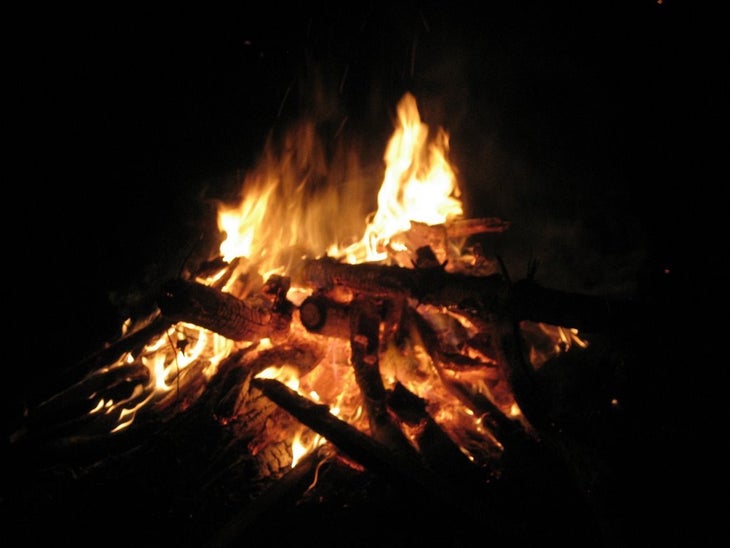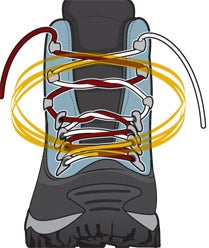Heading out the door? Read this article on the new Outside+ app available now on iOS devices for members! Download the app.

True Believer: Cody Lundin
“Of all the multiuse tools available, virtually none eclipse the adaptability and usefulness of fire,” says Lundin, who spent years honing primitive and modern wilderness skills, once lived for two years in a brush shelter, and founded the Aboriginal Living Skills Schools in 1991. “Ideally, carry three different methods for lighting fire,” says the author of 98.6 Degrees: The Art of Keeping Your Ass Alive.
>> Matches Use strike-anywhere matches, which can be lit on anything from a zipper to a rock. Coat your matches with paraffin: Dip them in melted-down candles, and dry them heads-up (prop them in Styrofoam) so you don’t get fat globs of wax that could hinder lighting. Your coated matches will burn twice as long (about 60 seconds) and with a larger flame than if uncoated. Now store them in a waterproof match safe, like Coghlan’s Match Box ($2, coghlans.com), and glue a piece of 400- or 600-grit sandpaper to the outside bottom of the safe. Don’t cram in so many matches that it’s hard to get one out with cold fingers.
>> Lighter Duh, right? But they’re not all created equal. Carry the flatter profile, non-childproof lighters because they a) typically have the adjustable flame option; b) have nonopaque bodies so you can see the butane supply; and c) are easy to operate with gloves or chilled fingers. Shop around: You want a lighter that has a blow-torch flame on high.
>> Tinder Cotton balls lathered in petroleum jelly burn for up to six minutes—a huge advantage in damp conditions. You can buy ready-made tinder, but this DIY option is easy, fast, cheap, light, effective, and even multiuse (you have on-demand lubricant for gear and skin). Be sure to get cotton balls made from 100-percent cotton (yes, synthetic varieties exist) that are “triple size.” Rub petroleum jelly into the outside of the ball; you want to saturate the fibers but leave the center dry, for easier lighting. Need heat? Simply tear open the ball, exposing the dry center, and light. Store six to seven of these little fireballs in a film or pill vial.
>> Magnesium Block Need convincing to pack this failsafe firestarter, which combines spark and tinder in one ultralight package? Magnesium burns as hot as 5,400°F, which is almost three times hotter than a standard flame. It even burns under water. The technique: Scrape a small pile of magnesium shavings (Cody Lundin packs the end of a hacksaw blade to avoid damaging his knife), and ignite them using matches, lighter, or the striker included with the magnesium block. To create a spark using the striker embedded in the magnesium, scrape it with your knife (if that’s all you have) or hacksaw blade. Tip: Pull back on the magnesium block, holding the blade in place, to prevent your hand from accidentally slipping forward and disturbing the tinder. Magnesium blocks cost less than $10, and practice makes a huge difference in performance, so buy two, one to train with and the other to pack.

Thou Shalt Not: Waste a good fire. Make gourmet s’mores: marshmallow + peanut butter cup + graham cracker. Plus scotch.